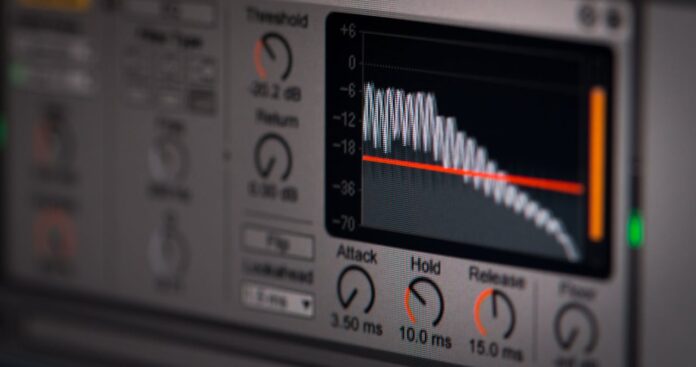A Glimpse into the World of Audio Forensics
Have you ever wondered how investigators extract crucial information from audio recordings? Welcome to the intriguing and mysterious world of audio forensics, where sound is analyzed and enhanced to solve cases and reveal secrets from the past. This field has made impressive strides in recent years, allowing audio forensic experts to decode even the most obscure and unintelligible recordings. Let’s dive into the key techniques and tools used by professionals in this fascinating field.
Transcription Services
Another crucial aspect of audio forensics is transcription, where the spoken words within a recording are meticulously converted into written text. Although automated transcription software is becoming popular, human transcriptionists are still an invaluable part of the process for guaranteeing accuracy, particularly when dealing with poor audio quality or specialized jargon.
Speaker Identification
In some cases, understanding the identity of the speaker can be just as important as the content of the recording. Expert forensic analysts use a combination of auditory and spectrographic techniques to compare known voice samples with the recording in question. These comparisons involve assessing various voice characteristics such as pitch, tone, and speaking rate, as well as evaluating any unique speech patterns or accents. The growing field of speaker recognition focuses on the science and research behind these methodologies, further enhancing the tools available to audio forensic professionals.
Modern Tools of the Trade
With the rapid advancements in technology, forensic experts now have access to an arsenal of tools and software designed to assist them in their work. Some commonly used digital applications in audio forensics include:
- Audio editors: Offering advanced editing and processing functionality, suitable for handling a wide range of audio formats.
- Spectrogram software: Providing detailed and customizable spectral analysis of audio files.
- Audio restoration tools: Assisting in eliminating noise, distortion, and other unwanted elements in the recording.
- Signal processing tools: Expanding the possibilities of audio manipulation and clarification.
Enhancing Audio Quality
More often than not, audio evidence is marred with background noise, distortion, or even intentional tampering. Forensic professionals use a range of audio enhancement techniques to isolate the important sounds and remove unwanted elements from the recording. These may include:
- Noise reduction: Elimination of constant or predictable noises such as hums, hisses, or mechanical sounds.
- Equalization: Adjusting the balance between various audio frequency components for better clarity.
- Time-stretching or compression: Alleviating the impact of speed fluctuations in the recording.
- Reverberation reduction: Suppressing echo effects caused by the recording environment.
Unlocking the Mysteries
Audio forensics is a riveting field that allows professionals to dig deep into sound and uncover crucial information for investigations. From refining audio quality to unraveling the identity of speakers and authenticating recordings, audio forensic techniques and tools play an integral role in solving cases and unlocking long-held secrets.
Collaboration with Other Forensic Disciplines
In many investigations, audio forensics professionals work closely with experts from other branches of forensics, such as video forensics, document analysis, and digital forensics. This interdisciplinary collaboration is essential for piecing together the full picture and providing context to an audio recording. By pooling their respective expertise, forensic specialists can establish even stronger proof of the accuracy and validity of audio evidence.
Spectral Analysis
Believe it or not, audio forensics sometimes requires experts to ‘see’ the sound in the form of visual representations called spectrograms. Spectral analysis enables the audibility of obscured or low-level sounds by producing detailed and colorful frequency-time displays. The forensic analyst can then identify unique characteristics, reveal hidden elements, and even authenticate the recording’s origin or time.
Legal Implications and Ethical Considerations
As with any form of forensics, audio forensics comes with its own unique complexities when discussing legal implications and ethical considerations. Issues around privacy and consent can sometimes blur the lines of admissibility and appropriateness of presenting audio evidence in court. As experts in their field, audio forensic practitioners must navigate these challenges carefully, conducting their investigations with the utmost integrity and compliance with the law.
Audio Authentication
Audio tampering and manipulation have become increasingly sophisticated, and forensic analysts are equipped to detect and expose such attempts. Audio authentication techniques involve analyzing the recording’s format, metadata, and content to pinpoint discrepancies or inconsistencies that may indicate tampering. By validating the integrity of the audio, investigators can ensure any derived conclusions or evidence are accurate and admissible in court.
Education and Training Requirements
Aspiring audio forensic analysts typically begin their journey with a background in either forensic science, audio engineering, or both. However, specialized knowledge and skills in the field of audio forensics are further developed through focused education and training programs, as well as practical experience in real-world scenarios. Degrees or certification programs in audio forensics, coupled with hands-on internships or work experience, pave the way for a successful career in this captivating domain.





